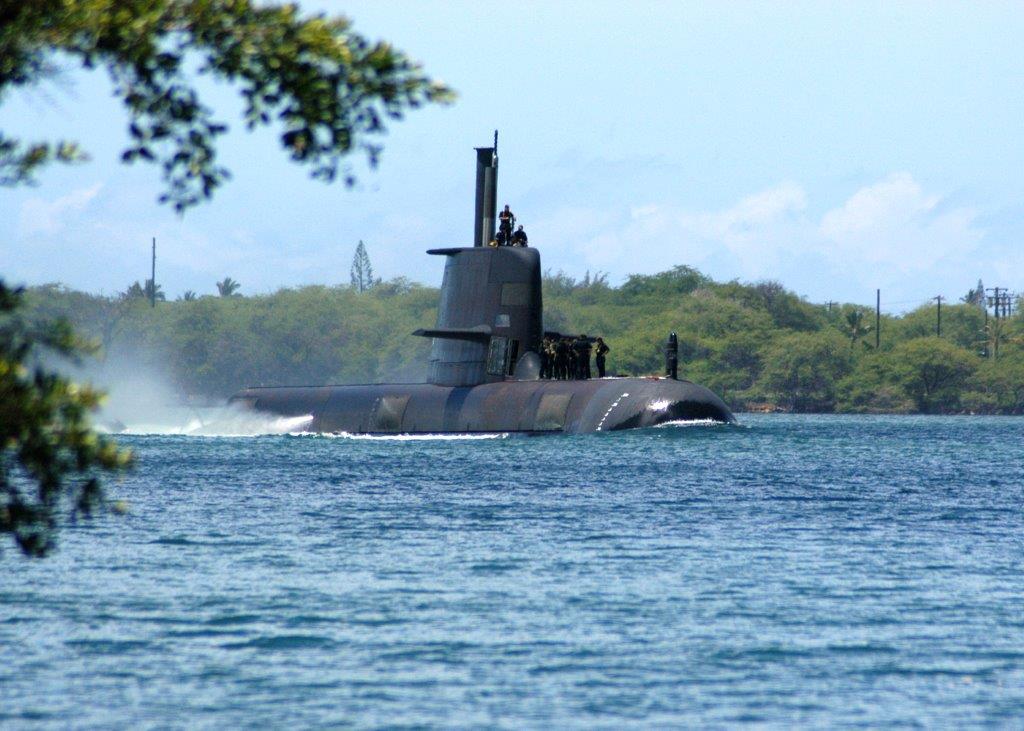
For Australia to operate a fleet of nuclear submarines would require great resources and incur a huge expense, says United States Pacific Fleet commander Scott Swift. Any country pursuing nuclear-powered vessels, ships, aircraft carriers or submarines should go down that path with a full understanding of the costs involved, Admiral Swift said during a recent visit to Canberra.
‘It’s very, very expensive to sustain nuclear-powered vessels’, he said. ‘There’s a significant infrastructure requirement and a significant safety requirement.’ When it came to nuclear power, he said that safety was a ‘no fail’ mission. ‘We spend an extraordinary amount of resources ensuring the safety of nuclear power.’
Former prime minister Tony Abbott suggested recently that Australia should consider switching some of its planned fleet of 12 conventionally powered submarines to nuclear-powered boats to give them greater range and speed.
Swift said that because Australia and the US were very close allies, if Australia were to consider obtaining nuclear-powered submarines he imagined that the US would welcome the dialogue. ‘The outcome of that dialogue? I have no idea. But I’ll give you my opinion.’
He thought the path Australia pursued in selecting a fleet of advanced conventionally powered boats fitted well with the discussions the Australian and US navies had conducted on regional defence. As a key weapon in anti-submarine warfare, Australia’s new Shortfin Barracudas would be highly compatible with the nuclear-powered boats of the US Navy.
Swift said that Australia’s submarines were the equal of the nuclear-powered submarines in his fleet. ‘People think that diesel-electric is old technology? It is an incredible technology’, he said.
‘It’s an absolute peer with my capability. The power makes no difference. It’s the weapons system that’s within it. It’s the operators. It’s the sailors that operate the weapons system.’
Swift said Royal Australian Navy chief Vice Admiral Tim Barrett had shown great leadership in the choice of a fleet of diesel-electric submarines. ‘He’s been masterful in how he has threaded this needle.’ Australia is buying 12 Shortfin Barracudas, which are to be conventional versions of the French nuclear-powered Barracudas.
Speaking before Mr Abbott’s recent intervention, Barrett told The Strategist that the government had made it clear that it wanted conventionally powered rather than nuclear-powered submarines. ‘If I were to look to the US, they have within their regulatory framework which manages nuclear power and submarines a four-star admiral who’s responsible for reactors and they’ve had that position for a good many years’, he said.
‘That person carries responsibilities to Congress and to the president for the management of those reactors within the US submarines—with extraordinary authority and trust to be able to manage it.’
Translating that to Australia, Barrett said, would mean the government allowing a navy officer to have the absolute authority to, for instance, evacuate parts of Sydney or Perth in an emergency. ‘It doesn’t matter whether you build them or lease them, it’s that regulatory process that can’t be ignored. It’s all about the maturity of the system in which you operate.
‘I’m not saying I’m not an advocate for nuclear submarines’, Barrett said. ‘I’m saying we need to appreciate all that is required for the nation to manage this. When we think like that, when we’re willing to trust and manage that, then we’re mature enough. I think we’re a long way from there,’ he said. ‘If you’re going to get to that point you’ve got to start somewhere and it’s going to take time before that level of assurance, confidence and trust is embodied in a position which will allow us to do that.’
Barrett said that, however they were powered, submarines had enormous value because an enemy could not be certain where they were. ‘The effect we’re seeking to deliver is uncertainty. It’s hard to put a value or a price on that, but it messes with the minds of the adversary, in their strategic thinking about where they go and what they do.’
If an adversary were to try to prevent trade or, in a worse case, to make a landing, any submarine caused a disproportional impact on the preparations the enemy had to make. ‘An adversary also needs to consider that you might know where all of their submarines are’, Barrett said.
Twelve Australian submarines on their own might never be able to achieve that, but 12 submarines as part of a force with the boats of allied navies placed an extraordinary imposition on someone considering harming this nation.
‘The submarine force will always retain that level of strategic advantage for government’, he said.
It’s often argued that by the time the navy’s new submarines are operational, unmanned, remote controlled submarines will dominate the oceans in such numbers that crewed submarines will be unable to operate.
Barrett predicts there will be greater use of unmanned vehicles, including submersibles, surface craft and aircraft. Manned and unmanned submarines are likely to play complementary roles through the life spans of the new Australian boats, and unmanned craft are likely to be controlled from manned submarines, says the navy chief. ‘Their combat systems will need to be complemented to allow them to work with unmanned vessels as well.’
But unmanned submersibles aren’t likely to take over for decades. ‘I can see our submarines standing alongside unmanned submarines in that time, but I don’t see them being replaced by them in that period,’ he said.

